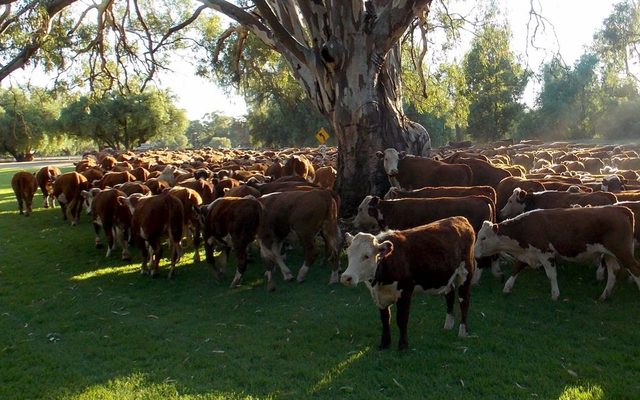This article is from the Australian Property Journal archive
A SLOWING global economy, easing commodity prices and drier seasonal conditions are weighing on Australia’s agricultural outlook for the second half of 2023, ending the sector’s good run with wetter weather and strong production.
Australian agriculture benefited from favourable seasonal conditions and strong production over the first half of 2023 with timely rainfall ensuring strong winter crop establishment and pasture growth, particularly on the east coast, pushing farmland sale prices to further highs and setting up property values for another year of double-digit growth.
However, easing commodity prices are impacting Australian farmers following several seasons of strong prices, and while export conditions have improved, a slowing global economy combined with drier seasonal conditions are weighing on the outlook, according to Rural Bank’s Australian Agriculture Mid-year Outlook.
Seasonal conditions remain a vital factor across all agricultural sectors with current forecasts from the Bureau of Meteorology indicating below-median rainfall is now very likely across most of Australia over the next six months. Current forecasts are for a 70% chance of an El Niño and positive Indian Ocean Dipole forming in 2023, which would drive hotter and drier conditions across the east coast.
The Department of Agriculture, Fisheries and Forestry is forecasting Australian winter crop production to fall by 34% from the record output of last season to 44.9 million tonnes, slightly below average, although a strong autumn break and timely rainfall in early June is supporting a strong start to the season.
Horticulture production estimates remain strong despite the drier outlook, while consecutive seasons of herd and flock rebuilding across livestock industries are expected to drive strong beef and lamb supply into the back half of the year.
Mark Pain, Rural Bank’s senior agribusiness relationship manager, Queensland, said Australian cattle prices are likely to remain softer in the coming months as supply on the market remains constant given the tough season being experienced in some cattle areas.
“Seasonal conditions will be the key influence on supply as producers weigh up whether to hold onto cattle or sell given the current drier outlook for the remainder of the year,” he said.
Lamb markets are expected to encounter good numbers of new season lambs in the second half of 2023, according to senior agribusiness relationship manager, Ballarat, Stuart Bear, and as high supply continues, markets will be looking for direction from export demand, which has been a “mixed bag” so far this year. A drier outlook should avoid the challenges presented by the wet conditions of late 2022 which culminated in a surge of supply in recent months, he said.
Rural Bank said trade conditions are expected to continue improving for Australian exporters despite the ongoing volatility in grain markets due to Russia’s ongoing invasion of Ukraine, though export demand has been impacted by the current economic environment. Both global bulk and container shipping rates have now returned to pre-pandemic levels as a slowdown in global economic activity softens freight demand.
The continued diversification of export markets is also expected to benefit a range of agricultural producers with the Australia-India Economic Cooperation and Trade Agreement (AI-ECTA) and Australia-United Kingdom Free Trade Agreement (A-UKFTA) both now in effect. Meanwhile, “punitive” tariffs and trade restrictions placed on a range of Australian agricultural exports to China including beef, lobsters, barley, cotton, table grapes and wine are slowly coming under review as trade relations between China and Australia thaw out.
“While most of these measures remain in place, increased dialogue between the two countries is a positive sign for Australian growers,” Rural Bank said.
Global economic growth is expected to continue to ease in the second half of the year, as inflationary pressures and the high interest rate environment drives lower investment and weighs on consumer sentiment. A higher Australian dollar is expected to weigh on the competitiveness of Australian agricultural exports, but this is tipped to only be a marginal impact with the Australian dollar still sitting below historical averages.
Fertiliser prices have eased thanks to lower energy prices and an easing of pandemic-induced supply chain issues domestically and on the local market. Reduced input costs are supporting grower margins amidst the broad decline in commodity prices that was observed across the first half of 2023.
The dairy sector can look forward to a profitable season ahead thanks to strong farmgate milk prices and positive seasonal conditions. Good returns will likely see production stabilise after consecutive years of decline in the face of labour shortage and increased input costs, said Rural Bank regional manager agribusiness, southern Victoria, Tony Anderson. He said Australian dairy prices appear to be “increasingly disconnected” from global conditions with contracting local production increasing the threat of imports from other regions.
Global economic headwinds are providing downward pressure on the outlook for wool prices, and coupled with local skilled labour supply shortages and increased costs for harvesting will see reduced sentiment in flock re-stocking by Australian wool sheep farmers in the short-term.




